Your cart is currently empty!
Why is Pottery Important? 7 Ways It Has Changed the World
Published:
Last Updated:
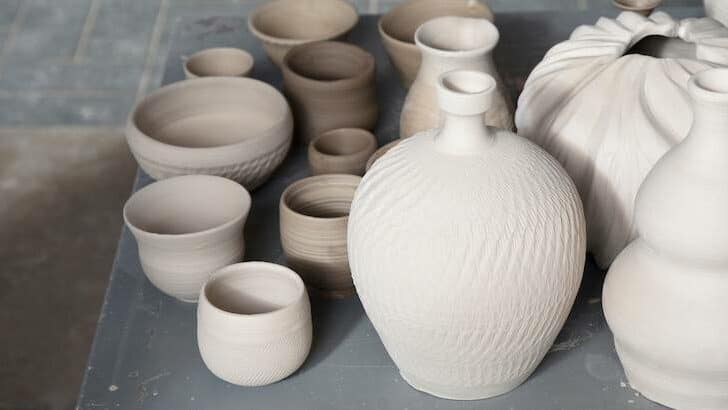
Affiliate Disclaimer
As an affiliate, we may earn a commission from qualifying purchases. We get commissions for purchases made through links on this website from Amazon and other third parties.
At the moment, pottery is enjoying a surge in popularity, with many people embracing it as a creative outlet. This can sometimes eclipse the vast history of pottery and its incredible influence over thousands of years. But how has the humble pot changed the course of history over the years and across the globe? And exactly why is pottery important?
Pottery is important because it is an enduring resource for archaeologists and historians to understand the past. It has enabled humans to cook, store and eat food for survival. And, it has been an economic driving force that has changed the fortune of many countries. Pottery has played a central role in many ceremonial rituals, and more recently it has been found to have many therapeutic benefits.
As such, pottery has been an invaluable cornerstone of our existence since neolithic times. So much so that the neolithic period is divided into the Pre-Pottery Neolithic era and ceramic Neolithic times.

7 Reasons Why Pottery is Important to the World
Lets have a look at 7 reasons why pottery has had such a profound impact on the world, starting with a tour of the past…
Reason #1) Pottery is Important to Archaeologists
Pottery provides archaeologists and researchers with invaluable data about the history of humanity.
Humans are known to have made pottery as far back as the neolithic era, around 10000 years ago. But pottery sherds have also been found dating back 20,000 years in China.
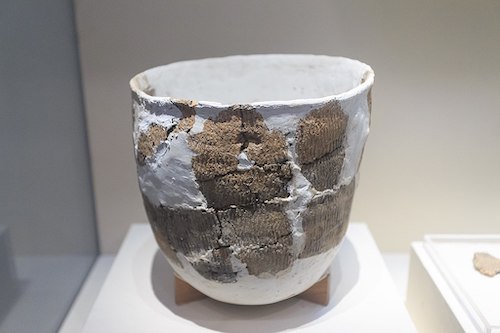
Pieces of ancient pottery were discovered in the Xianren Caves in Eastern China. Humans were known to have lived in these caves at the time.

Archaeologists excavate pottery from sites of historic interest. This involves digging sherds of pottery or sometimes complete pots from the ground.
The pots are then carefully cleaned. The cleaning process needs to be handled carefully, as very old pieces of pottery can disintegrate if they become too wet.
Once the piece is clean and dry, archaeologists carefully gather as much data as they can from visually inspecting the pieces. This includes features such as size, shape, colors, surface treatments, weight, and decoration.
After being visually inspected the sherds and pots can be sent off for specialist analysis. One kind of analysis is called Thermoluminescence Dating (TD).
TD works on the principle that objects, including ceramics, absorb radiation over the course of their life. The TD process involves heating the pottery sherd to above 500C (932F).
When it has been heated, the sherd gives off a weak light that is in proportion to the amount of radiation the object contains. Measuring the luminescence allows us to gauge how old the piece is and when it was originally fired. As a result, these days we have very accurate data about how old a piece of pottery is.
What Can Ancient Sherds of Pottery Tell Us?
Analysis like Thermoluminescence dating can tell us exactly when a piece of pottery was made. And the information that the archaeologist collects about the pottery can tell us about the civilization that produced it.
Here are some of the things we can know from examining discovered pottery:
1) Available Technology
Knowing how a piece of pottery was made can help us understand what kind of technology and equipment was known at the time. Was the pot hand-made or made on a wheel?
We know that Roman civilizations made wheel-thrown pottery. This information is available to us because pieces of discovered roman pottery often have concentric rings around the inside surface. These rings are made by the potter’s hands on the wheel.
By contrast, earlier iron age pottery does not have any of the tell-tale signs of being wheel thrown. Instead, iron-age pottery was made through a process of pinching or coiling by hand.
This tells us that the Romans had more advanced technology available to them than was around in the iron age.
We can also tell from sherds of pottery, how these civilizations were firing their ware. This is known by the color and texture of the clay. During the iron age, pottery was fired in a bonfire.
Sometimes they would boost the temperature by covering the fire with a clay shell that was destroyed after the firing. But essentially, the firing processes used in the iron age were very primitive.
We know this because of the color of the pottery that is found from that era. And also because the pots have relatively less strength and the clay is not fully matured by the heat from the fire.
Again, contrast this with the roman age. These pots were smoother, finer, and harder than their iron-age counterparts. They were fired in stone-lined buildings that were designed for making pottery.
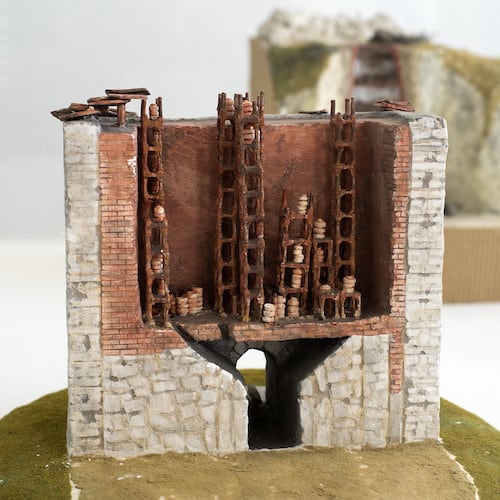
These were early kiln constructions that enabled higher temperatures to be reached. As a result, their pottery was more sophisticated and of better quality. And it indicates some level of industry and mass production of pottery.
2) Interconnection
We can also tell from excavated pottery how the different sites and settlements were connected to one another.
For example, some pottery is made out of local clay and made in the local style. Other pottery is made from clay that must have been sourced elsewhere. Indicating that the pieces have been imported from other places.
One example of this is Samian ware. This was most often red-looking pottery, though some were black. The pottery was made from refined clay that was rich in the mineral illite.
When the pot had been formed it was dipped in a clay slip after it was made and then fired. The slip, also known as terra sigillata gave the pieces a highly polished, refined look. Samian ware was used as tableware by the Romans, in particular, it was prized as high-quality tableware in Roman Britain (source). However, Samian pottery was mostly made in Gaul, now known as France, and was then imported to Britain.
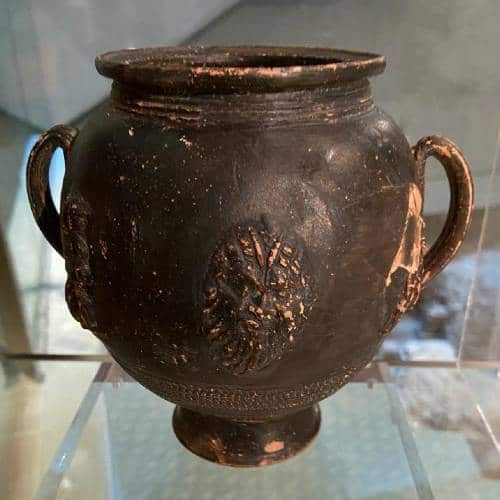
So, we know from the presence of French-made Samian ware that pottery was being transported from France to Britain.
Why is Pottery Such a Good Source of Information for Archaeologists?
One of the reasons that pottery is an invaluable resource for archaeologists, is that it is everywhere. Pottery is quite sturdy, and whilst it is often broken when it is found it can often be reassembled to give a fuller picture.
A lot of information can be gathered from pottery that is discovered. Some of this information includes…
- The shape and style of the pottery.
- How it was being used by the people of the time and what was their lifestyle like. The analysis of residues on pottery can tell us about life during that era. For example, residues of animal fat that have been absorbed into the ceramic surface.
- How it was made; was it hand-made, wheel-thrown, or molded?
- Surface decorations; was it painted, incised, covered with slip, or glazed?
- What clay was it made from and what did they add to the clay to improve its quality
This information, including other data, can help us piece together a picture of life thousands of years ago.
Reason #2) Pottery is Important to Historians
The signficance of pottery can’t be understated because it has more or less helped the human race to survive and thrive.
At a very basic level, pottery has provided humans with durable containers to eat from and cook with. It also enabled food to be stored at a time when glass and plastic had not yet been invented. The storage of food helped humans to survive harsh winters and dry. It also enabled the development of industries such as agriculture.
Grain could be stored in large pots and used to feed the community throughout the year.
This was also the basis of the agricultural industry, with larger quantities of grain being exchanged and later sold.
Because pottery is so important, entire eras are sometimes named after the ceramics being produced at the time. A striking example of this is the Jomon period in Japan. So, let’s take a look at that now…
The Jomon Period
The Jomon period in Japan dates from around 14,000 BC and ends at around 300 BC. It’s the earliest era in Japanese history and spans thousands of years.
It was named after the type of ceramics that was being produced at that time. The word Jomon actually means ‘rope pattern’ or ‘cord marked’ depending on the translation you use.
This name refers to the way that texture was added to pottery at the time. In 1877 an American zoologist and archaeologist called Edward S. Morse discovered some sherds of pottery in the Kanto region of Japan.
Morse described the pattern on the sherds as being ‘cord marked’. This term was then translated into the Japanese word ‘Jomon’.
The sherds that Morse discovered were from the early Jomon period. At that time the pottery was given texture by pressing rope or cord into soft clay. However, over the thousands of years that spanned the period, the style of Jomon pottery changed.
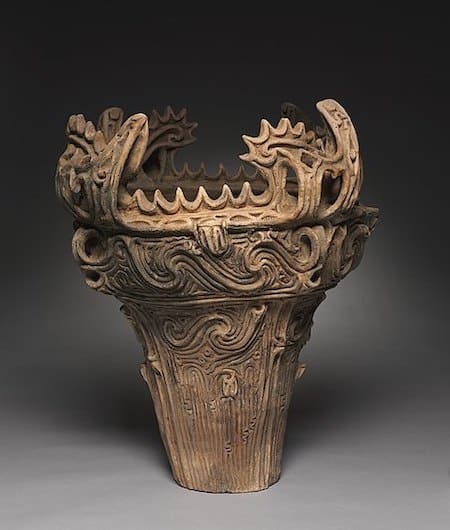
As a result, the Jomon period is divided by historians into 6 phases. Each phase is defined by different styles of Jomon earthenware. There was a lot of diversity in the different styles of each phase. These differences can be used by archaeologists and historians to plot timelines and identify regional differences (source).
The Bell Beaker Culture
There are many other examples of entire eras and cultures that were named after the type of pottery produced at that time.
One example of the important role that pottery played in the identification of certain cultures was the Beaker people or the Bell Beaker people. They were so named after the inverted bell shape of the pottery they made.
The Bell Beaker culture was very important in Europe because the Beaker folk were instrumental in the shift from neolithic times to the bronze age.
Archaeological finds indicate that around 4500 years ago, a new bell-shaped beaker was being made in Spain and Portugal. At that time, this region was Iberia.
The Movement of Bell Beaker Culture and Ceramics
Over the next 100 years, the bell-shaped beakers began to be made over the whole of Europe, eventually ending up in Britain. A study tracked the spread of the Beaker culture, by following the appearance of Beaker pottery across Europe.
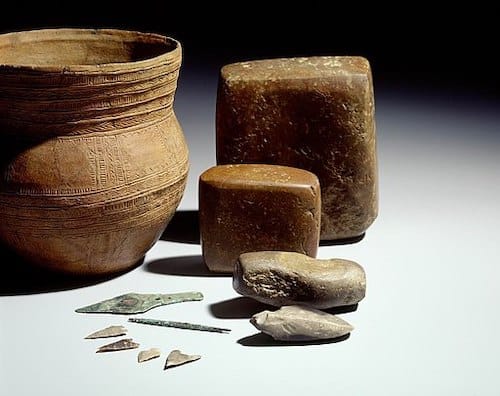
Rijksmuseum van Oudheden, Leiden, CC BY 3.0, via Wikimedia Commons
The study combines information gathered from the pottery of that time with DNA evidence from the ancient bones of local folk. It was found that in continental Europe, the Beaker culture seems to have spread through the movement of skills and ideas. DNA suggests that this happened without too much movement of the actual population (source).
By contrast, at the time in Britain, which is an island, there was a significant change in the DNA of the local population. This suggests that the Beaker culture and their ceramics arrived through a large-scale migration from Europe into Britain (source).
The study of the Bell Beaker people highlights the importance of pottery in defining an entire culture. But also the important impact that the spread of this pottery had on the regions that it arrived in.
Reason #3) The Cultural and Ritualistic Importance of Pottery
Pottery has played an important role in rituals in many cultures across the world. One example of this is the ritual of the Japanese tea ceremony.
The Japanese tea ceremony has been performed for hundreds of years. It is a ritual in which the host offers tea to guests in their home. The ceremony is structured according to an established order. And the pottery used to drink the tea are of special significance.
Between 1336 and 1573, Chinese ware was used during the tea ceremony. The Chinese vessels were intricately designed and had luscious colors.
However, 1573 was a time of political turmoil in Japan, and the Muromachi government was overthrown. Around this time there was a movement in Japan beginning to emerge that was called wabi-sabi. This is a set of beliefs or a worldview that acknowledges the imperfection and impermanence of everything in life.
The emergence of wabi-sabi was reflected in the pottery used in the ritual of the tea ceremony. Elaborate Chinese ware was replaced by simpler Korean tea bowls.
And eventually, the Japanese raku tea bowl evolved which is said to embody the principles of wabi-sabi. Tea bowls have been made by the Raku family for centuries, and over this time there have been differences in style.
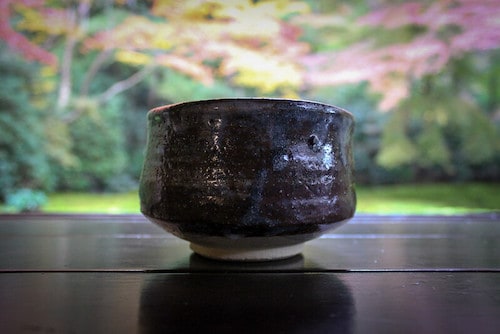
Photo ©Christian Kaden / www.Japan-Kyoto.de
(CC BY-NC-ND 2.0)
However, what they have in common is that they are handmade rather than wheel thrown. As a result, there are subtle irregularities in the shape, which is thought to reflect the imperfection of all life. You can read more about Japanese raku pottery here.
Reason #4) Pottery is Important for Economies
Throughout history, there have been countless occasions when pottery development has led to huge economic growth. This has happened in different countries and times and pottery has been a prolific force in economic growth.
Delftware
One example of this is the impact that the emergence of Delft pottery had on the economy of the Netherlands. In the early 17th century, Dutch potters were making simple majolica earthenware pottery.
At that time Chinese porcelain was growing in popularity amongst wealthy Dutch individuals. The Chinese porcelain was white with elaborate painted blue designs.
Some of the existing potteries in Delft tried to recreate the look of Chinese porcelain with the local earthenware clay. They did this by applying white tin glaze to the local yellow clay. Decorations were then painted on top of the white tin glaze using cobalt oxide which turned blue when it was fired.
Gradually over the century, Delft pottery grew in popularity. It was called Delft porcelain even though it was made out of earthenware clay. Potteries sprang up in Delft to meet growing demand, and by the end of the 17th century, there were over 30 factories in Delft making Delftware.

Photo courtesy of Rijksmuseum, Public Domain
The factories employed local people who became skilled workers and the blooming Delft potteries created jobs and wealth.
The Decline of Delftware
The 18th century saw a change in fortune for the Delft potteries. A number of changes were happening in pottery production in different parts of the world and this competition proved to be too much for the Delft potters:
- Japanese and Chinese porcelain was being sold at cheaper prices and was stiff competition for Delftware.
- The secret of how to make porcelain had been discovered in Germany in 1709. After this discovery, porcelain production began in Germany and spread to France.
- More competition came from Britain, with the emergence of Creamware and also hard-paste porcelain, which both proved to be popular alternatives to Delftware.
Gradually the Delft potteries closed, and today only one of the original factories remains in operation. But the history of Delftware demonstrates how the development of pottery techniques can have a profound impact on an economy. You can read more about Delftware here.
There is also a beautiful book about the rise of Delftware called Midnight Blue by Simone van der Vlugt which you might want to check out.
Of course, there are many other countries where similar stories can be told about the economic impact of ceramics.
Industrialization and Mechanisation
Over the years the production of some ceramics has become increasingly mechanized. Large factories can mass-produce ceramic using machines that press the clay into shape on a production line.
These pieces can then be decorated and glazed by automated machines and then fired in enormous tunnel kilns.
The inexpensive mugs and plates you can buy in the supermarket are almost certainly mass-produced in this way. So, what has happened to the craft of making pottery? And is pottery still important today? Let’s take a look at that now…
Reason #5) Many Communities Still Rely on Pottery
It’s true that mechanization has led to the mass production of a lot of ceramics. However, many communities still employ pottery-making techniques used by their ancient ancestors.
The Burkina Faso Potters
There are many examples of how traditional techniques have survived. But one striking example is the women potters of Burkina Faso in West Africa. The women of Burkina Faso continue to make pottery using the same coiling and beating techniques that have been used for centuries.

For many years, the firing methods remain the same, with pots being fired in large, but simple pit fires in the ground. However, over the last 30 years, an NGO called Development Workshop (DW) has been working with local women potters to improve their firing techniques.
The DW helped local builders make mud brick kilns with a ceiling to improve the potter’s production methods. This enables the pottery to be fired at higher temperatures making the pottery stronger. It also helps to even out the heat that the pottery is subjected to, improving the quality of the ceramics produced (source). These improvements have in turn increased the potter’s income.
There are many other examples of communities of potters around the world making pottery using historical techniques. Some other examples include Mata Ortiz pottery in Mexico, The Charai Taba potters in India, and the potters of the Yunnan Province of southwest China.
In addition to being an important source of survival and economy in many countries, pottery is a significant artisan pursuit. Many economies no longer rely on the production of handcrafted pottery for their survival.
However, the artisan skill of making pottery has other valuable functions. Here are some of the other roles that pottery can play…
Reason #6) The Therapeutic Value of Pottery and Clay
It has been known since the middle of the 20th century that making art can have a beneficial effect on mental health. Art therapy first emerged in the 1940s and 50s to help psychiatric patients with their mental illness.
However, more recently there has been research into how working with clay can impact positively on mental and physical well-being. Clay Art Therapy, or CAT, involves working with clay. It has been found to have a beneficial effect on anxiety and depression in adults (source).
It has also been found that working with clay can help to alleviate tremors, sleep, and speech difficulties of patients with Parkinson’s disease (source).
Pottery and Mindfulness
Since the 1990’s there has been a growth in the popularity of the practice of mindfulness. Mindfulness has been found to be an effective treatment for anxiety and depression. So much so that there is a psychological therapy called mindfulness-based CBT (Cognitive Behavior Therapy).
One of the main techniques of mindfulness is to bring your attention to what you see, hear, and feel in the here and now.
It’s thought that one of the reasons that working with clay can boost mental well-being is that it involves focusing on bodily sensations as they occur.
When you make pottery, all your senses are engaged and your attention is focused on a tactile activity. It’s thought that this helps to quieten the mind and reduce the levels of cortisol, a stress hormone in the bloodstream.
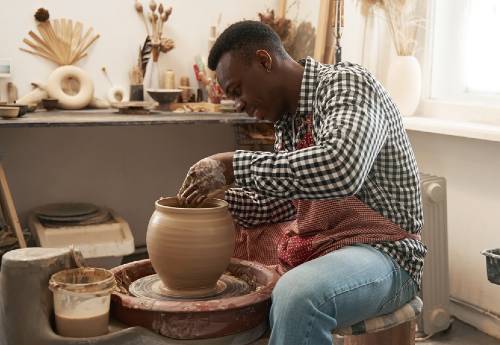
In addition to this, making something out of clay that you feel good about can boost your self-esteem. Of course, there is always the other side of the coin. Every potter knows the sense of frustration that can arise when something you are making out of clay goes wrong.
But that experience of feeling frustrated one moment and then joyful the next at what you have made is part of the creative process. This leads us neatly to the final reason why pottery is important…
Reason #7) Pottery as Creative Expression
Over the years, the question of whether pottery is a form of art or not has been a point of disagreement.
Some people believe that objects of fine art, are pure forms of self-expression by the artist. This would include for example painting and sculpture. They believe that pottery is a craft rather than an art because potters often make functional objects.
Functional objects include pieces like mugs, plates, bowls, and jugs. There is a particular utilitarian reason for the pottery being made.
Others point out that pottery is often infused with the potter’s self-expression. A piece of pottery may have a function, but it is also an expression of the potter’s creativity and artistry.
Many potters have avoided this whole disagreement by calling themselves ‘makers’ instead of artists or craftspeople.
Putting the question of labels aside, what is clear is that pottery is a highly creative pursuit. Some creative features of making pottery are as follows:
- The mastery of physical skills and techniques
- Developing a style of your own.
- Having a vision of how you want your pottery to look and feel to other people
As many creators will know, part of the creative process does involve a rollercoaster of ups and downs. At times you can feel excited and alive about what you are making. At other times you might feel despair and doubt about your work.
This yoyo of emotions is known to all types of creative folk, from writers and scientists to potters (source).
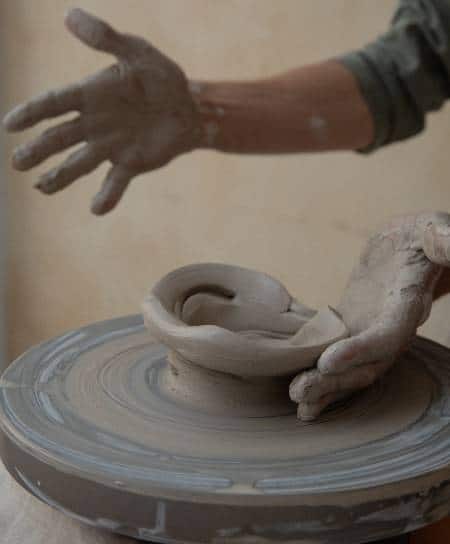
The creativity involved in making pottery is one of the reasons it has been enjoying a growth in popularity recently. It’s a chance to our hands dirty and make something that is both useful and beautiful. This is a creative antidote in an era in which we are dominated by screens.
Final Thoughts
Pottery is important for more reasons than it is possible to explore in one sitting. It has helped humanity survive and it has changed the political and economic course of history.
The way we make pottery today has changed very little from ancient times. This connects us to the past.
The crafts aesthetic may be fashionable at the moment, but more than that pottery connects us to the earth. Dirt and fire are primal and it’s unlikely that experimenting with either of these elements will ever go out of fashion.



